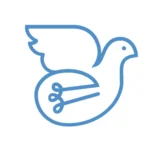The energy of youth is largely responsible for powering violent conflict, as well as social movements for positive social change. As Dr Jatinder Khanna shows, the application of youthful energy to intercultural peace programs and political activism are essential for peacebuilding in Russia and elsewhere.
This paper shall apply a discourse analysis of Disarmament, Resettlement and Reintegration (DRR) of ex-combatants with special emphasis on Northern Uganda, a region which has faced conflicts for over two decades. I apply knowledge and skills required to plan, manage and implement programmes for sustainable recovery of war-torn Northern Uganda.
February 15 2003 saw the biggest public demonstration worldwide against the war on Iraq. Since then a large number of the organizations involved have continued to voice their concerns over the occupation of Iraq, although interests have broadened to embrace less high-profile conflict situations The following details a selection of
In this paper, I will construct potential ‘solutions’ to the problem of global climate change within the theoretical frameworks of hegemonic peace, liberal peace, and cosmopolitan peace.
Ssentongo and Raalten propose a Conflict Intervention Model to diagram conflict in its general sense. While the model is based on the idea that structural and psycho-cultural approaches are foundational to resolution, it simplifies the process by utilizing John Paul Lederach's pyramid on leadership.
Barriers to Peace: Assessing Separation Barriers’ Legality and their Implications for Peace Processes Author: Sean Khalepari Originally Published at Peace and Conflict Monitor on: 11/01/2007 Governments in multiple countries have turned to the construction of Separation Barriers as a security measure in response to protracted ethno-national violence. It is argued
Pre-existing ethnic and economic divisions between Bougainville and the rest of Papua New Guinea and the mismanagement of the copper wealth of the Panguna Mine exacerbated existing tensions and provided radical Bougainvilleans an excuse to legitimise the pursuit of violence as a means to resolve their grievances. This article examines
Most of the developing societies are facing the problem of complex violent conflict. India is not an exception, although the political set up of the country is based on freedom of choice. Presently, three major constituencies – Jammu and Kashmir, Northeastern India and Eastern and Central India – are facing
Over the past several decades, peace-building and trauma studies have emerged as interdisciplinary fields that seek to better understand their respective social phenomena and develop appropriate responses. Practitioners of peace-building often work in severely conflicted settings with groups that have been exposed to traumatic events, while a number of trauma
In this timely article, Kenneth Cloke reflects on the potential of mediation to inspire conflict transformation and social development in times of interpersonal as well as international crisis.
Technical aspects of mediation are also discussed, as Cloke draws from his considerable experience in the field, offering practical and accessible advice
Instagram




